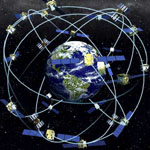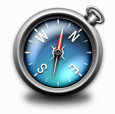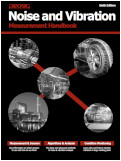5 Famous Moments of Genius
The guys at Engineering.com have come up with a great list of key moments of scientific/mathematical/engineering genius. The post includes links to a couple of superb videos too. Read the…
The guys at Engineering.com have come up with a great list of key moments of scientific/mathematical/engineering genius. The post includes links to a couple of superb videos too. Read the…
 I had absolutely no idea that this archive existed on the BBC website and so it was a joy to discover that it did. I have never come across anyone else who has been able to explain scientific principles in a way that makes them so easy to understand as Richard Feynman could. It is rare to find a mind so capable of grasping the most complex aspects of science and yet is also able to reduce them to a form that we mere mortals can understand.
I had absolutely no idea that this archive existed on the BBC website and so it was a joy to discover that it did. I have never come across anyone else who has been able to explain scientific principles in a way that makes them so easy to understand as Richard Feynman could. It is rare to find a mind so capable of grasping the most complex aspects of science and yet is also able to reduce them to a form that we mere mortals can understand.
 Prosig have recently added two new ways for our readers to keep in touch with new articles on the blog, happenings at Prosig and other interesting information that we find about NVH, noise & vibration measurement and condition monitoring. Now, as well as Twitter, Facebook & LinkedIn, we can be found on Google Buzz and Flickr.
Prosig have recently added two new ways for our readers to keep in touch with new articles on the blog, happenings at Prosig and other interesting information that we find about NVH, noise & vibration measurement and condition monitoring. Now, as well as Twitter, Facebook & LinkedIn, we can be found on Google Buzz and Flickr.
For those of you unfamiliar with these sites…
 This post is a celebration of everything great in science, technology and engineering. From simple inventions, through future technologies, to one of the greatest human minds in history. All of the following videos are examples of the best there is in technological innovation and invention. The sort of radical thinking that makes one think “Wow!”.
This post is a celebration of everything great in science, technology and engineering. From simple inventions, through future technologies, to one of the greatest human minds in history. All of the following videos are examples of the best there is in technological innovation and invention. The sort of radical thinking that makes one think “Wow!”.
Do you know of any more videos like these? Why not share them by adding a comment with a link in the Leave A Reply box at the bottom of the article. If we have enough we will publish a followup article featuring the best of your suggestions.
An investigation was made of a sample of automotive components where some were exhibiting a high frequency “tick” or rattle during each operating cycle. This feature could be heard above the normal operating noise. The problem this posed was to measure and analyze components in an objective fashion and classify components as “good” or “bad”.
For our latest collection of videos we’ve searched for the most interesting examples of noise, vibration and acoustic examples and applications we could find. A couple are educational, some are of technical interest and some are just LOUD!
We’ve had a good look around YouTube and dug up a great collection of educational mechanical engineering videos. There’s a wide range of information here from simple maths tutorial to explanations of the inner workings of the internal combustion engine. We hope you enjoy watching and if you have any favorites of your own please drop a comment in the box at the bottom of the page.
Nice animation and explanation of the workings of a gas turbine [Edit: video link changed after first became unavailble]
On 2nd May we reached the 10 year anniversary of the removal of SA from the NAVSTAR GPS system. For those of you not familiar with SA or Selective Availability…
We’ve scoured the web (well, YouTube mostly) for the coolest engineering related videos we could find. Have you got your own favourite engineering videos? Please use the comment box at the end of this post to tell us what they are.
(more…)This video was sent to us by one of our customers. It shows how a Prosig P8000 was used to measure the vibration transmitted through different configurations of bicycle suspension.…
If you're a fan of Twitter or Facebook there's a new way to keep up to date with the latest Prosig articles on the Prosig Noise & Vibration Blog. We…
Some great video lectures from NPTEL, India’s National Programme on Technology Enhanced Learning via MeasurementBlog. These are fantastic resources whether you're just starting out and want to learn some new…
Research at Palo Alto Research Center (PARC) could lead to the replacement of mechanical compressors in refrigerators and air conditioners. The new technology could lead to a threefold increase in…
 As you may know Prosig have recently released a GPS module for their popular P8000 series of data acquisition systems. The GPS module adds the ability to record accurate position information alongside all of the normal measurement channels. This is a highly useful capability and enables an engineer to easily correlate measured results with vehicle position and behaviour at the time. It also makes it simple to extract data based on position on a test track or road course.
As you may know Prosig have recently released a GPS module for their popular P8000 series of data acquisition systems. The GPS module adds the ability to record accurate position information alongside all of the normal measurement channels. This is a highly useful capability and enables an engineer to easily correlate measured results with vehicle position and behaviour at the time. It also makes it simple to extract data based on position on a test track or road course.
Here’s another post inspired by an office discussion. We were discussing our favourite engineering based websites and realised the results would make a great blog post. So after a rummage through our bookmarks and a little further debate we’ve come up with our top ten sites. We tried to keep the list balanced so you’ll find a few resource sites, a little bit of fun and one or two sites that aren’t purely engineering sites, but contain valuable knowledge for engineers. Do you have a favourite site that we haven’t included? Why not add a comment below and give your favourites a plug.
Road noise (the noise produced by the interaction of tires and road surface) is in many circumstances the dominant noise experienced by vehicle occupants. The requirements for producing quieter roads…
The V7.0 release of DATS, the long-established signal analysis software from Prosig, contains a comprehensive fatigue analysis package for stress-life, strain-life and weld-life prediction. Prosig also design and manufacture a…

The latest version of the CAN-bus/GPS (8440) module is now available for the Prosig P8012, P8020 and P8048 systems. The CAN-bus/GPS module has been in use in the field for some time now, recording CAN-bus information for display and analysis alongside noise, vibration, temperature and other signals captured by P8000 systems. The DATS software treats all analog and CAN-bus parameters in the same way so any mixture of parameters can be selected for display in real-time and subsequent processing. CAN-bus parameters can also be used to trigger immediate and pre-triggered captures and to stop captures.
The 8440 module now has an option to capture GPS parameters in addition to the other signals. The data capture software now also supports a realtime GPS track overlayed on a map. Velocity and altitude data measured by the GPS system can also be displayed alongside any other measurement channels in realtime displays. The latitude, longitude, altitude and velocity data is stored with with all the other sensor data captured by the P8000 system and is available to view and process in the resulting datasets. These signals can then be used to classify or select data for further analysis. For example you could choose to process data when the vehicle is on a particular road or a particular section of the track, or if you find an unusual event use the GPS data to give a position and time or the event.
 Prosig have welcomed 2010 with the official launch of their PROLOG data acquisition controller.
Prosig have welcomed 2010 with the official launch of their PROLOG data acquisition controller.
PROLOG is a controller that will allow remote, unattended or standalone operation of a P8000 system. In normal operation a P8000 data acquisition system is connected to a laptop or PC and data is stored, in real-time, on the computers hard drive via the USB 2.0 interface. This configuration provides a robust, high speed data capture environment. However, there are situations where it is not practical to keep the laptop connected. In some cases the environment may be suitable for the P8000 unit, but not for some of the more fragile components in a laptop. In other situations it may be desirable to have the measurement system in one location, whilst the operator may be positioned some distance away. The PROLOG unit is designed to address both of these requirements.

Following a discussion in the office about Fourier Transforms we did a little searching on the web. As always, we discovered that the Internet is packed with some great resources on Fourier and his work. So rather than keep all of the information to ourselves we thought we should share it with our readers. We have whittled our list down to 10 links that we think represent the whole range of information from beginners guides to reference pages. So there should be something for everyone whether you’re a grizzled signal processing veteran or a student looking to learn something new. If you have your own favourite Fourier links then please add them to the comments. Maybe we could use them for a future blog post. Or if you have other comments please feel free to add them below.
Using Prosig’s P8000 series data acquisition system with DATS signal analysis software, torsional analysis (crank shaft jitter) was performed on an automotive engine attached to an engine dynamometer. The significance of this is that only one tachometer channel was required to identify crank jitter.
(more…)